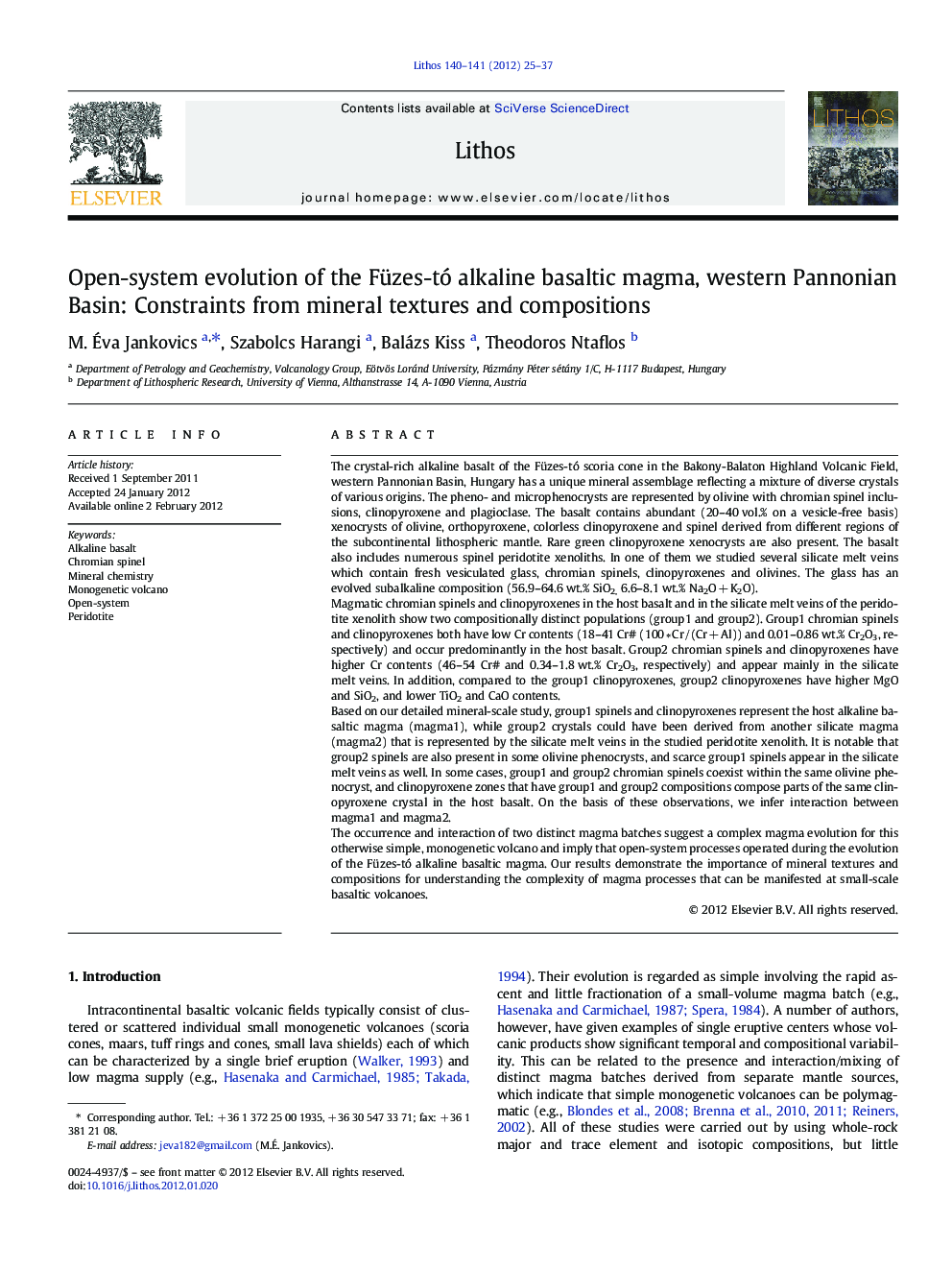| کد مقاله | کد نشریه | سال انتشار | مقاله انگلیسی | نسخه تمام متن |
|---|---|---|---|---|
| 4716615 | 1638709 | 2012 | 13 صفحه PDF | دانلود رایگان |

The crystal-rich alkaline basalt of the Füzes-tó scoria cone in the Bakony-Balaton Highland Volcanic Field, western Pannonian Basin, Hungary has a unique mineral assemblage reflecting a mixture of diverse crystals of various origins. The pheno- and microphenocrysts are represented by olivine with chromian spinel inclusions, clinopyroxene and plagioclase. The basalt contains abundant (20–40 vol.% on a vesicle-free basis) xenocrysts of olivine, orthopyroxene, colorless clinopyroxene and spinel derived from different regions of the subcontinental lithospheric mantle. Rare green clinopyroxene xenocrysts are also present. The basalt also includes numerous spinel peridotite xenoliths. In one of them we studied several silicate melt veins which contain fresh vesiculated glass, chromian spinels, clinopyroxenes and olivines. The glass has an evolved subalkaline composition (56.9–64.6 wt.% SiO2, 6.6–8.1 wt.% Na2O + K2O).Magmatic chromian spinels and clinopyroxenes in the host basalt and in the silicate melt veins of the peridotite xenolith show two compositionally distinct populations (group1 and group2). Group1 chromian spinels and clinopyroxenes both have low Cr contents (18–41 Cr# (100 ∗ Cr / (Cr + Al)) and 0.01–0.86 wt.% Cr2O3, respectively) and occur predominantly in the host basalt. Group2 chromian spinels and clinopyroxenes have higher Cr contents (46–54 Cr# and 0.34–1.8 wt.% Cr2O3, respectively) and appear mainly in the silicate melt veins. In addition, compared to the group1 clinopyroxenes, group2 clinopyroxenes have higher MgO and SiO2, and lower TiO2 and CaO contents.Based on our detailed mineral-scale study, group1 spinels and clinopyroxenes represent the host alkaline basaltic magma (magma1), while group2 crystals could have been derived from another silicate magma (magma2) that is represented by the silicate melt veins in the studied peridotite xenolith. It is notable that group2 spinels are also present in some olivine phenocrysts, and scarce group1 spinels appear in the silicate melt veins as well. In some cases, group1 and group2 chromian spinels coexist within the same olivine phenocryst, and clinopyroxene zones that have group1 and group2 compositions compose parts of the same clinopyroxene crystal in the host basalt. On the basis of these observations, we infer interaction between magma1 and magma2.The occurrence and interaction of two distinct magma batches suggest a complex magma evolution for this otherwise simple, monogenetic volcano and imply that open-system processes operated during the evolution of the Füzes-tó alkaline basaltic magma. Our results demonstrate the importance of mineral textures and compositions for understanding the complexity of magma processes that can be manifested at small-scale basaltic volcanoes.
► Integrated textural and chemical analyses of minerals found in an alkaline basalt.
► Petrogenetic importance of magmatic chromian spinel in the origin of mafic magmas.
► Two distinct populations of magmatic chromian spinels and clinopyroxenes.
► Two different magma batches could have been involved in this monogenetic eruption.
► Interaction (and possible mixing) could have occurred between the magma batches.
Journal: Lithos - Volumes 140–141, May 2012, Pages 25–37